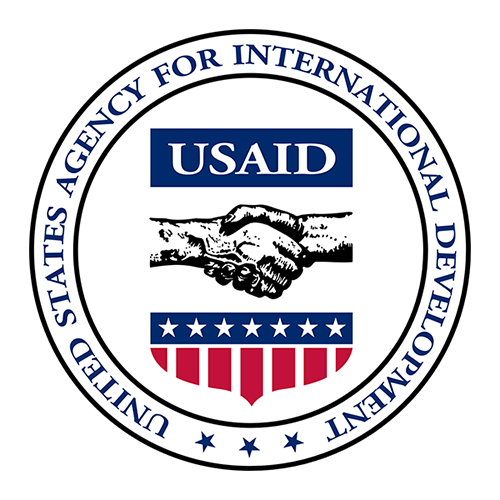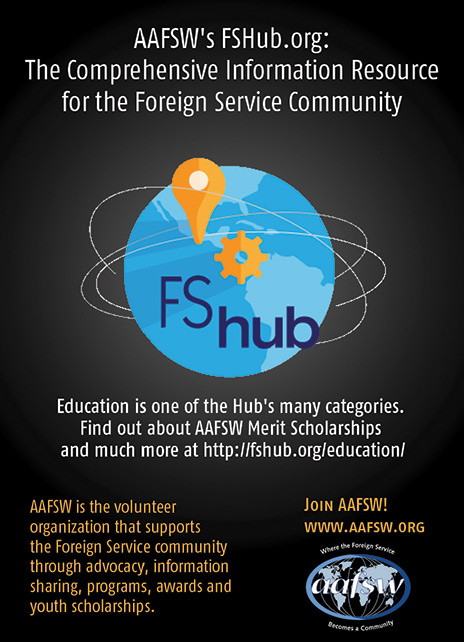USAID Transforms
Here are the highlights of USAID’s ongoing Transformation initiative, undertaken to better meet the development challenges of the 21st century.
BY CHRIS MILLIGAN

The world was quite different when I joined the U.S. Agency for International Development in 1990. The Cold War was ending; cell phones and email were novelties; and Nelson Mandela had just been released from prison. Moving from a bipolar world and then, later, to a post-9/11 one, the threats to our national security and prosperity also changed.
Growing the ranks of prosperous, capable and democratic states that can partner with the United States is in our national interest. Nevertheless, the 21st century is being defined by resurgent authoritarianism and a competition for ideas. At question are the values and standards that have governed international institutions, protected U.S. interests and promoted global stability since the end of World War II.
Authoritarian governments need a world that looks like them, and they are strategically investing in creating one, using their growing influence to reduce international criticism of their internal policies while expanding their clout in international organizations. They are advancing an alternative to democracy, increasing support for illegitimate elections, exporting new tools of censorship and repression, and pressuring other governments to compromise on core democratic principles. The Economist reports, for instance, that China spends $10 billion a year on soft power initiatives that complement its economic and military strength.
Despite significant development gains, many countries are vulnerable to crises and instability that can derail progress. Today, the majority of USAID’s programming is in states that are fragile, suffering from active conflict or recovering from it. Our work is increasingly focused on the root causes of instability and extremism. Underscoring the changing global context is the stark fact that fully 80 percent of our humanitarian assistance helps those suffering from violent conflict—conflicts that are increasingly complex and entrenched.
Standing up these new entities underscores a strategic shift in how USAID addresses the challenges presented by increasing state fragility, conflict and complex humanitarian issues.
As the world continues to evolve, development has become even more central to U.S. security and economic goals. The events of 9/11 brought greater awareness of the fact that terrorism and international crime thrive in fragile states, and that good development is essential for national security. Terrorism and violent extremism have grown since September 2001, and extremism cannot be curbed through military force alone. Our continued economic prosperity depends on maintaining and expanding access to global markets where 95 percent of the world’s consumers live.
In response to Executive Order 13781, A Comprehensive Plan for Reorganizing the Executive Branch, USAID established a Transformation Team in June 2017 to lead the agency’s reform efforts. The resulting Transformation initiative positions USAID to better meet the challenges of this evolving world. Through a series of interconnected, employee-led reforms, we are changing how we are structured; how we work; and how we support our people to better achieve our national goals.
Changes in USAID’s Structure and How We Work
With congressional approval, we are reforming our structures to improve effectiveness. I will focus on three of the important changes here.
First, USAID is standing up a new Bureau for Conflict Prevention and Stabilization, bringing together the agency’s conflict prevention expertise and integrating it throughout our development programs. The CPS bureau will allow USAID to better respond to the challenges of preventing and mitigating violent conflict by strengthening our capacity to address fragility, respond to crises and act as a stabilizing force in times of transition.
Second, we are elevating USAID’s core humanitarian function through the new Bureau for Humanitarian Assistance. Creating a strong platform for humanitarian policy and operations, the HA bureau will optimize resources to ensure coordinated and effective humanitarian programs. It allows for a more cohesive approach to disaster preparedness, mitigation and risk reduction, safeguarding communities and allowing them to recover more effectively.
Third, the new Bureau for Resilience and Food Security builds on USAID’s successes in reducing global hunger, poverty, malnutrition and water insecurity. Despite development gains, shocks and stresses can cause backsliding and perpetuate a cycle of chronic vulnerability, poverty and hunger. The RFS bureau’s focus on building resilience will help break this cycle, reducing the need for costly humanitarian responses and mitigating state fragility.
These new bureaus (CPS, HA and RFS) represent USAID’s work in relief, response and resilience. Standing up these new entities underscores a strategic shift in how USAID addresses the challenges presented by increasing state fragility, conflict and complex humanitarian issues. This shift is not only about elevating USAID’s expertise in these areas but also integrating it across other core processes such as strategic planning, program design and program evaluation.
USAID is implementing other important structural changes that improve how we operate, such as standing up a new Bureau of Development, Democracy and Innovation. For more detailed information on this change and others in the area of structure, please see www.bit.ly/transforming-structure.
Our ability to effectively meet the challenges of an evolving world depends on attracting and retaining highly skilled FSNs.
The world has changed, and we are changing how we work. We have created new tools and approaches that make us a better partner and increase the impact of every development dollar. Recognizing the private sector as the most powerful force for lifting people out of poverty, we launched our first Private Sector Engagement Strategy last year. In this we are moving beyond the traditional public-private partnership model, and deepening true collaboration, co-creating and co-financing with the private sector, unlocking investment and market-based approaches to development challenges. We have rolled out new tools, mechanisms and support for our overseas missions to be able to quickly operationalize this strategy.
Like any sector, the development sector benefits from the robust competition of ideas. It also benefits from the agility, fresh thinking and innovations that a greater diversity of partners can bring. We are expanding who we work with under our new acquisition and assistance strategy and our New Partners Initiative, which lower the barriers to entry for working with USAID, especially for small and local partners. And we are expanding the use of procurement tools like broad agency announcements that identify a challenge, raise its visibility and then work with interested partners on the proposals they bring forward.
Changes to Support Our Workforce
Our success depends on our people. Three-quarters of our overseas workforce are local employees, or Foreign Service Nationals. Our ability to effectively meet the challenges of an evolving world depends on attracting and retaining highly skilled FSNs. Many of our FSNs are technical experts with advanced degrees. They bring deep and nuanced understanding of their countries to bear as they implement multimillion-dollar U.S. government programs. We are giving FSNs a greater voice by supporting the FSN Advocacy Council, creating senior-level FSN positions and hosting the second-ever Worldwide FSN Conference. We are also expanding professional development opportunities such as the FSN Fellowship Program, which allows FSNs to rotate into different bureaus in Washington and at other USAID missions for an extended period. These fellowships allow FSNs to not only bring their experiences and voices to important policy development but also gain a greater understanding of how the agency works.
To grow talent and support new leaders, we have launched new leadership and mentoring initiatives. We have institutionalized training for first-time mission directors and senior development advisers. We are using a similar process to develop training for our deputy mission directors. Working with the USAID Alumni Association, we are supporting a professional development program linking career or career-candidate Foreign Service officers and retired USAID FSOs. During my 30 years with USAID, I’ve repeatedly heard about the need for a better Foreign Service Performance Management system. Previously, meeting evaluation submission deadlines often took priority over actual management time between supervisor and employee. Based on extensive employee input, in 2018 USAID rolled out a new FSPM system that emphasizes the interaction between supervisor and employee.
Consistent with our agency’s new leadership philosophy, the new FSPM system seeks to build a culture of excellence and leadership—and, importantly, accountability. The leadership philosophy sets our expectations of behavior and accountability for all employees, regardless of position or hiring mechanism. This philosophy models the USAID Core Values and outlines how agency employees should act on these values, both within the agency and on behalf of the agency.
In addition to these reforms, the creation of new bureaus in relief, response and resilience provides new professional opportunities for USAID FSOs. While we continue to value the contributions of experts regardless of hiring mechanism, we are building in opportunities for FSOs to develop their professional skills in these areas that are fundamental to our foreign policy goals.
At the core of all this change is the principle of the “journey to self-reliance”—that the purpose of foreign assistance should be to end the need for its existence.
We are also clarifying roles and responsibilities, and better aligning functions. Addressing today’s complex challenges requires a concerted unity of effort. In the field, this can be complicated by multiple funding sources and authorities, and specialized functions. To reinforce a “One Team, One Mission, One Voice” approach, agency leadership has clarified that all USAID personnel—regardless of home bureau or funding— function under a single organizational structure under chiefof- mission authority, led by the senior-most USAID officer at post, whether a mission director, USAID representative, senior development adviser or the senior USAID representative. Implementing this guidance improves the coordination, programming and communication necessary to achieve foreign policy goals and to contribute effectively to the interagency team at post.
One commitment of the Transformation initiative is to make our agency more field-focused. Our field missions depend on Washington for technical support in many sectors, and this support comes from a variety of offices and bureaus, each with its unique procedures. Lacking a standard process, missions can spend considerable time and effort to track down and secure support. USAID staff members often draw on personal relationships to shortcut the mix of processes. But the overreliance on personal relationships erodes transparency and increases inequities in the level of support Washington provides.
Having collected feedback from FSOs, USAID is implementing an “Agency Approach to Field Services”—a system that establishes uniform, agencywide procedures for requesting and providing field support; creates an online portal with a searchable database of support services to facilitate requests and allows our FSOs to track these requests; and establishes governance mechanisms to ensure accountability, oversee standards of performance and continually improve how we support the field.
The Journey to Self-Reliance
At the core of all this change is the principle of the “journey to self-reliance”—that the purpose of foreign assistance should be to end the need for its existence. All of our reforms are designed to accelerate development progress and work toward the day when partner countries can finance and implement solutions to their own development challenges. In doing this, USAID presents a different model to the developing world— namely, a strategic partnership that strengthens governance institutions, rules and practices to advance the country’s own development. By contrast, the authoritarian government’s model is one of establishing strategic dependence based on the use of predatory finance, corrosive capital and tools of repression in an attempt to build legitimacy.
The relationship between the Department of State and USAID is central to the United States achieving its foreign policy objectives. While diplomacy and development are distinct professions with distinct expertise, they must coordinate closely to achieve U.S. government goals. The spaces we operate in (e.g., humanitarian assistance, conflict prevention and stabilization, political transitions, countering violent extremism, fragile states) are increasingly interagency spaces. The Transformation initiative recognizes that our work requires far more coordination and engagement with the interagency than has been the case in the past.
Change is not merely an implementation process. At the center of this change are people who have dedicated their professional careers to the work of USAID. Despite our employees’ participation in shaping these reforms, reorganization interrupts predictability, fuels uncertainty and adds to work-life stress. Given the scale of the Transformation reforms, change is neither easy nor instantaneous. It takes significant time to move from consultation to design, approval and implementation—a lengthy process that can increase the anxiety that uncertainty brings. We are also sensitive to the need to work with different organizational cultures, manage distinct authorities and untangle overlapping processes. To be successful, we need to hire for the future and attract talent with skills in areas such as private-sector engagement and innovative partnering.
Reforming our structures, programs and workforce is an ambitious undertaking, but it positions USAID to best achieve our national goals in today’s challenging global environment.




